Lorenz系统
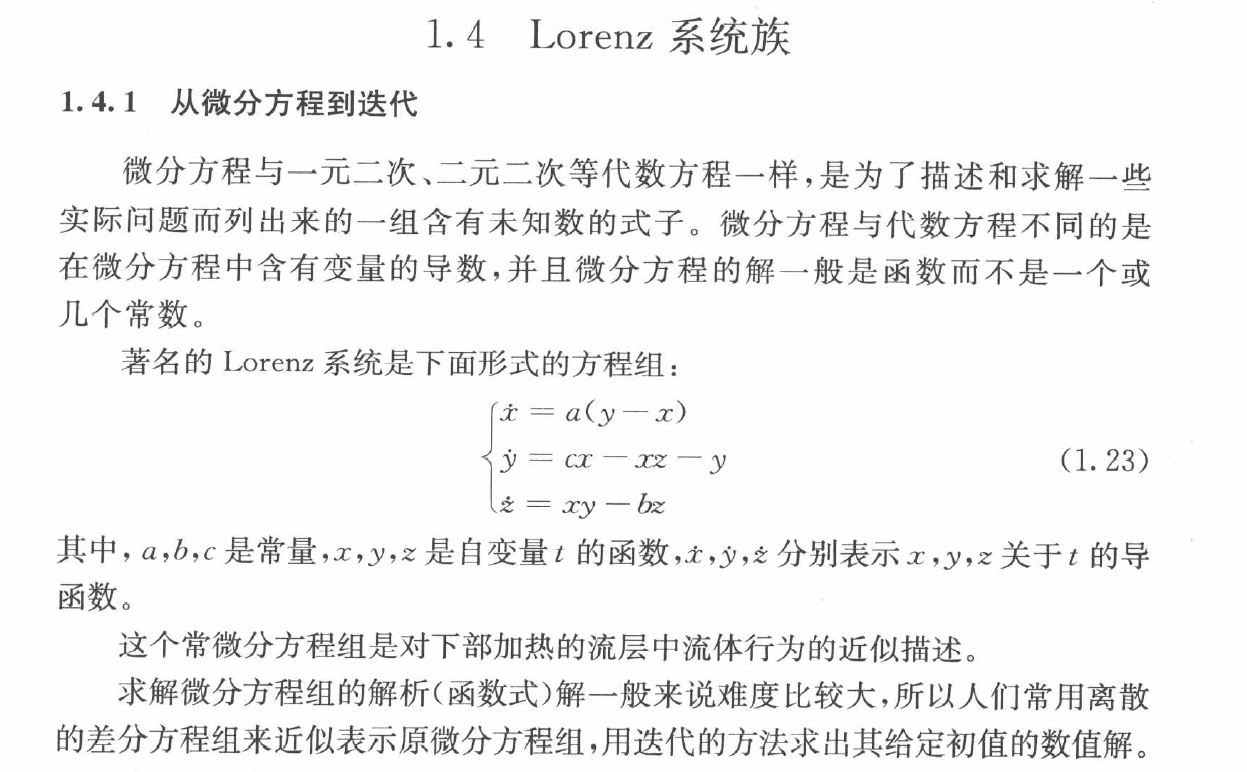

单振子
a=10,b=8/3,c=28
module Lorenz
implicit none
real,parameter :: h=0.005
integer,parameter :: N=100,MaxT=130000
real :: x(N),y(N),z(N)
contains
subroutine x0_y0_z0()
implicit none
integer :: k
real :: x1,x2,x3
call random_seed()
do k=1,N,1
call random_number(x1)
call random_number(x2)
call random_number(x3)
x(k)=2.0*x1-1.0
y(k)=2.0*x2-1.0
z(k)=2.0*x3-1.0
write(10,*) x(k),y(k),z(k)
end do
end subroutine x0_y0_z0
subroutine fnf()
implicit none
integer :: i,j,t
real :: func_x(N),func_y(N),func_z(N),a,b,c
a=10.0
b=8.0/3.0
c=28.0
do t=1,MaxT,1
do i=1,N,1
func_x(i)=x(i)+h*(a*(y(i)-x(i)))
func_y(i)=y(i)+h*(c*x(i)-x(i)*z(i)-y(i))
func_z(i)=z(i)+h*(x(i)*y(i)-b*z(i))
if(i==1) then
write(20,*) x(i),y(i),z(i)
write(30,*) t,x(i)
end if
end do
x=func_x
y=func_y
z=func_z
end do
return
end subroutine fnf
end module Lorenz
program main
use Lorenz
open(10,file="data_x0_y0_z0.txt")
open(20,file="xyz.txt")
open(30,file="t_x.txt")
call x0_y0_z0()
call fnf()
end program main- x
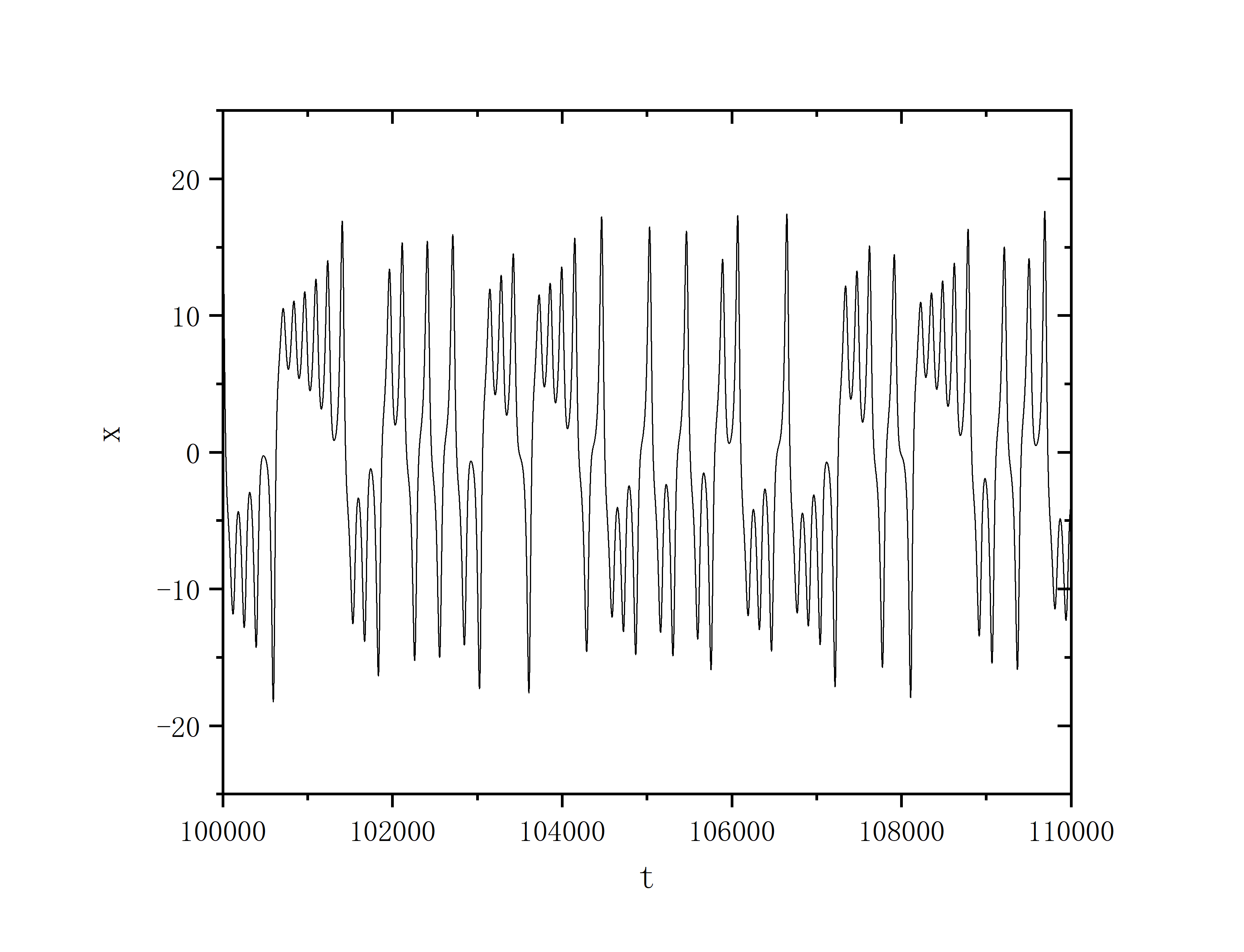
- y
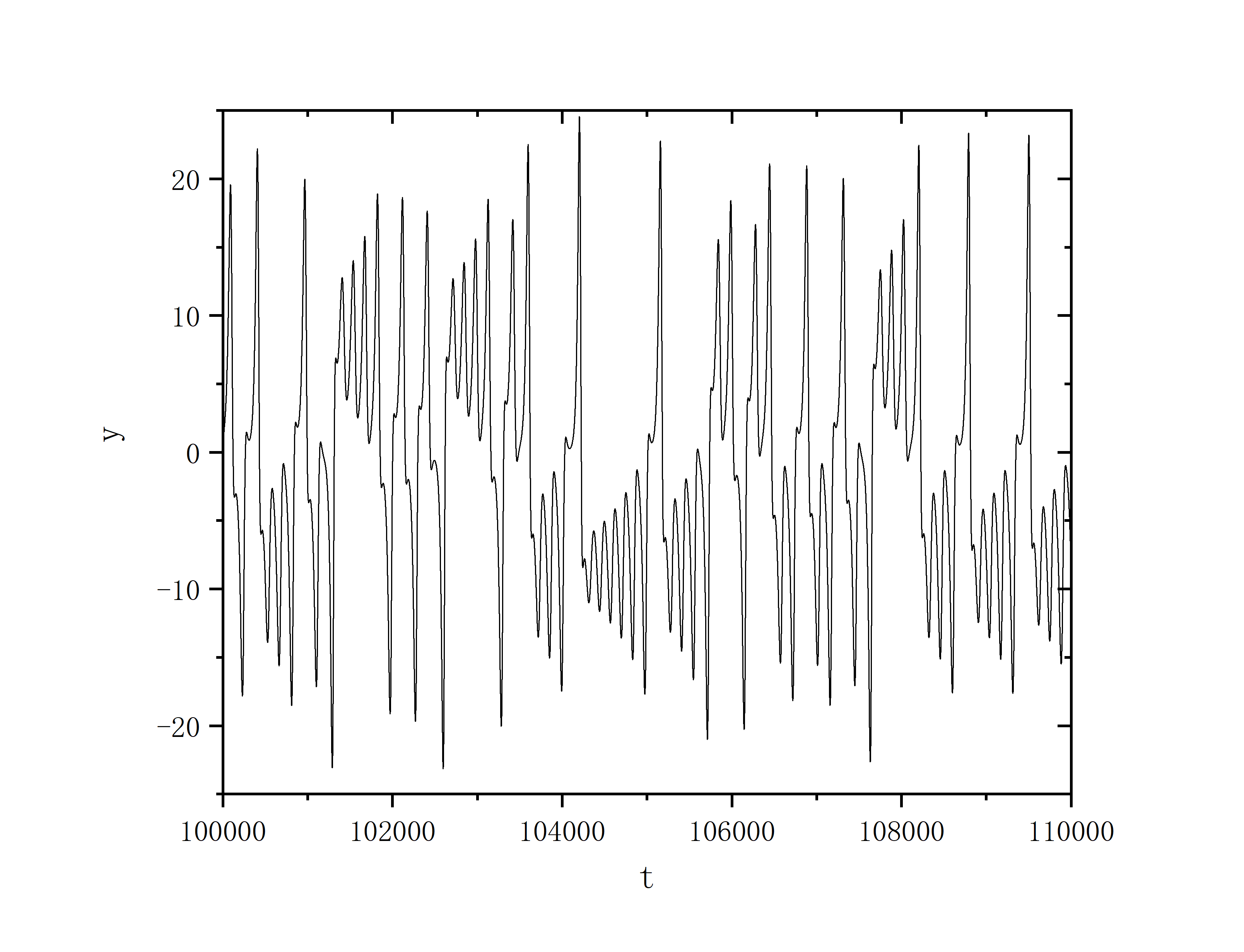
- z

无效分岔图
⚠使用x,y,z来判别是否分岔并不具有有效性,这里的Lorenz的轨迹相对复杂,无法以此作为依据
保持a,b不变,改变c
- 常规求法
module Lorenz
implicit none
real,parameter :: h=0.01
integer,parameter :: N=100,MaxT=10000
real :: x(N),y(N),z(N)
contains
subroutine x0_y0_z0()
implicit none
integer :: k
real :: x1,x2,x3
call random_seed()
do k=1,N,1
call random_number(x1)
call random_number(x2)
call random_number(x3)
x(k)=2.0*x1-1.0
y(k)=2.0*x2-1.0
z(k)=2.0*x3-1.0
write(10,*) x(k),y(k),z(k)
end do
!x=0.1
!y=0.1
!z=0.1
end subroutine x0_y0_z0
subroutine fnf(c)
implicit none
integer :: i,j,t
real :: func_x(N),func_y(N),func_z(N),a,b,c
a=10.0
b=8.0/3.0
do t=1,MaxT,1
do i=1,N,1
func_x(i)=x(i)+h*(a*(y(i)-x(i)))
func_y(i)=y(i)+h*(c*x(i)-x(i)*z(i)-y(i))
func_z(i)=z(i)+h*(x(i)*y(i)-b*z(i))
if(i==1.and.t>9900) then
write(20,*) x(i),y(i),z(i)
write(30,*) t,x(i)
write(40,*) c,x(i)
end if
end do
x=func_x
y=func_y
z=func_z
end do
return
end subroutine fnf
end module Lorenz
program main
use Lorenz
implicit none
integer :: i
real :: c
open(10,file="data_x0_y0_z0.txt")
open(20,file="xyz.txt")
open(30,file="t_x.txt")
open(40,file="c_x.txt")
!c=15.0
!call x0_y0_z0()
!call fnf(c)
do i=0,10000,1
c=i*0.01
write(*,*) i
call x0_y0_z0()
call fnf(c)
end do
end program main- 随机初始条件
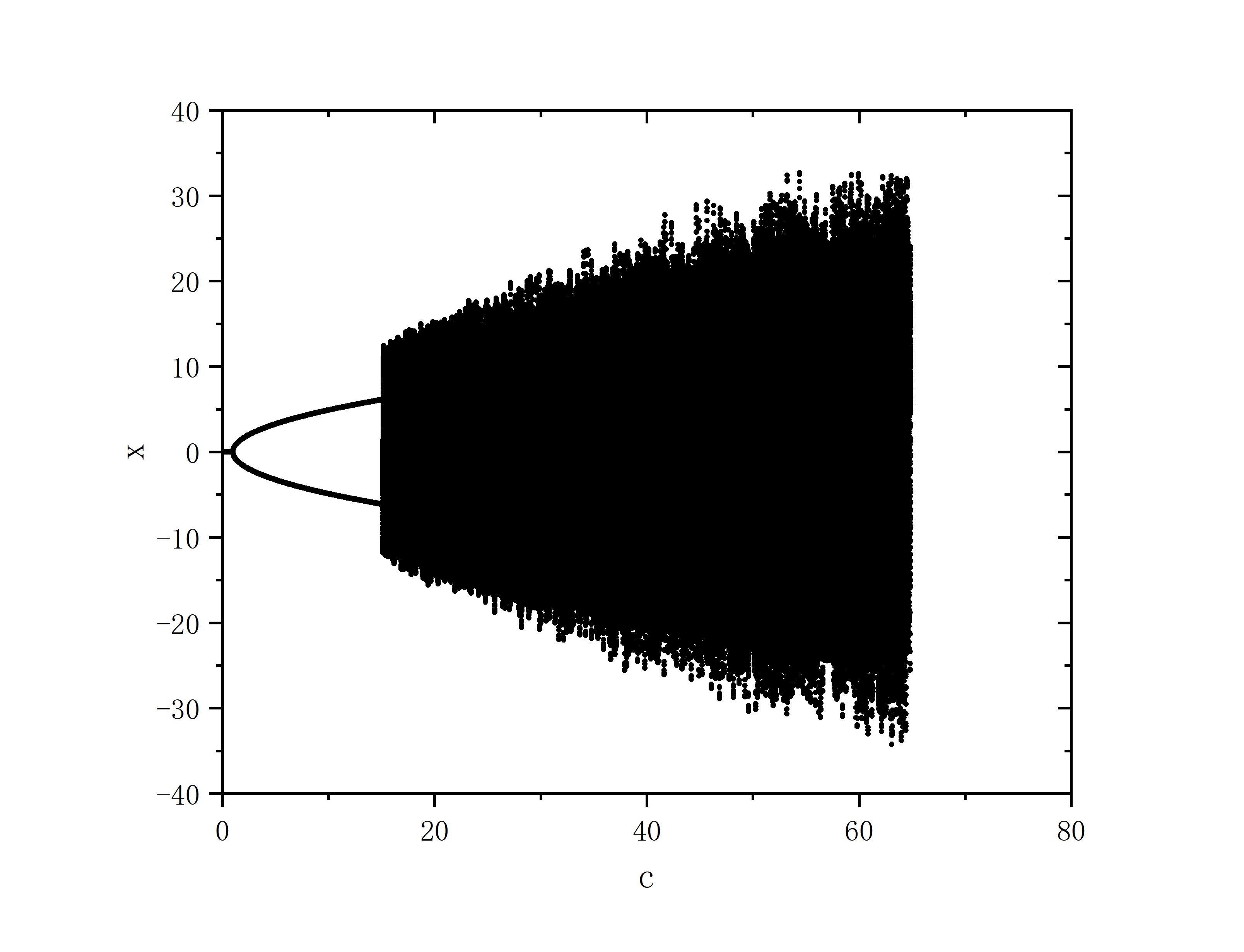

- 固定初值


- 庞加莱截面法
保持a,c不变,改变b
- 随机初始条件
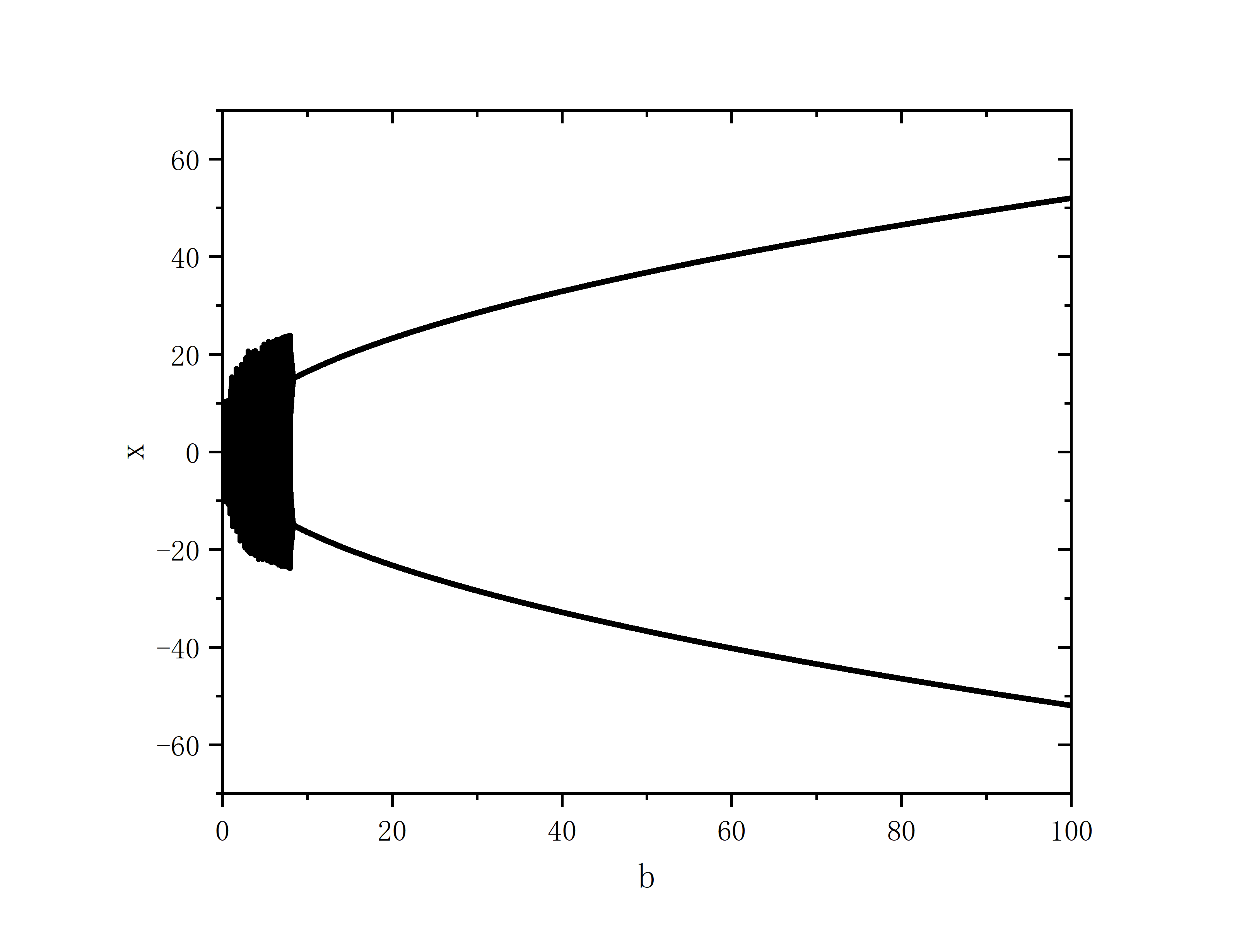
- 固定初值
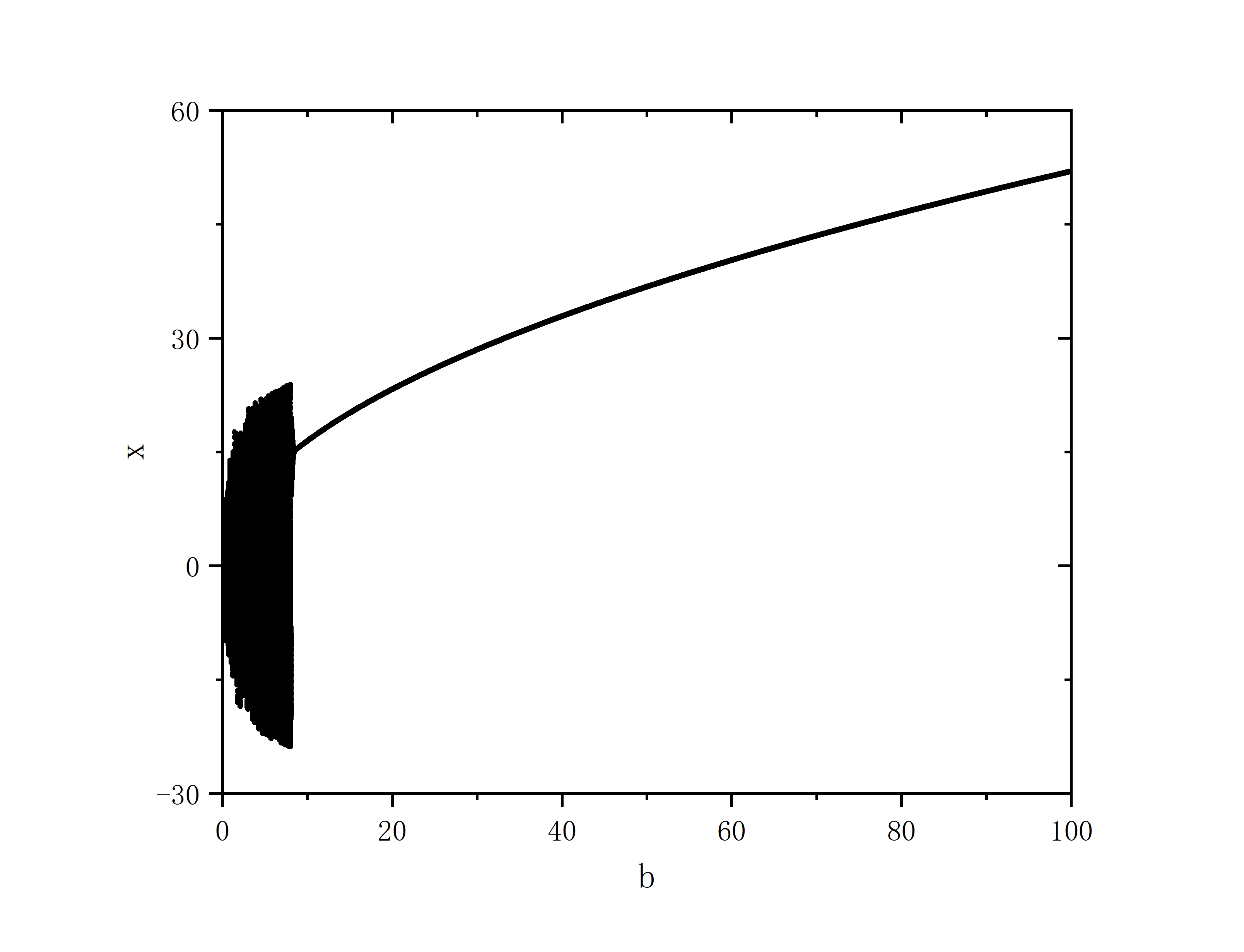
保持b,c不变,改变a
- 随机初始条件

- 固定初值

有效分岔图
- 根据过原点的间隔时间来作为周期分岔依据,即一圈的时间。

例子来源:Remote firing propagation in the neural network of C. elegans
以x的时间序列为依据

module Lorenz
implicit none
real,parameter :: h=0.01
integer,parameter :: MaxT=20000
real :: x,y,z
contains
subroutine fnf(c)
implicit none
integer :: i,j,t,count_up,count_down,status
real :: func_x,func_y,func_z,a,b,c,T_interval,T_start,T_end
a=10.0
b=8.0/3.0
x=0.001
y=0.001
z=0.001
count_down=0
count_up=0
T_start=0.0
T_end=0.0
T_interval=0.0
status=0
do t=1,MaxT,1
func_x=x+h*(a*(y-x))
func_y=y+h*(c*x-x*z-y)
func_z=z+h*(x*y-b*z)
x=func_x
y=func_y
z=func_z
if(t>10000) then
if(x<0.0) then
count_down=count_down+1
end if
if(x>0.0.and.abs(T_start-0.0)<0.1) then
T_start=t
end if
if(x<0.0.and.abs(T_start-0.0)>0.1) then
count_up=count_up+1
end if
if(x>0.0.and.count_up>5) then
T_end=t
T_interval=T_end-T_start
write(30,*) T_interval
status=status+1
if(status>1) then
write(40,*) c,T_interval*h
end if
count_up=0
count_down=0
T_start=0.0
end if
write(20,*) t,x
end if
end do
return
end subroutine fnf
end module Lorenz
program main
use Lorenz
implicit none
integer :: i
real :: c
open(10,file="data_x0_y0_z0.txt")
open(20,file="c_x.txt")
open(30,file="T_interval.txt")
open(40,file="c_T_interval.txt")
do i=0,10000,1
c=i*0.01
write(*,*) i
call fnf(c)
end do
close(10)
close(20)
close(30)
close(40)
end program maina_T

b_T

c_T

a=10,b=8.0/3.0,c=28.0

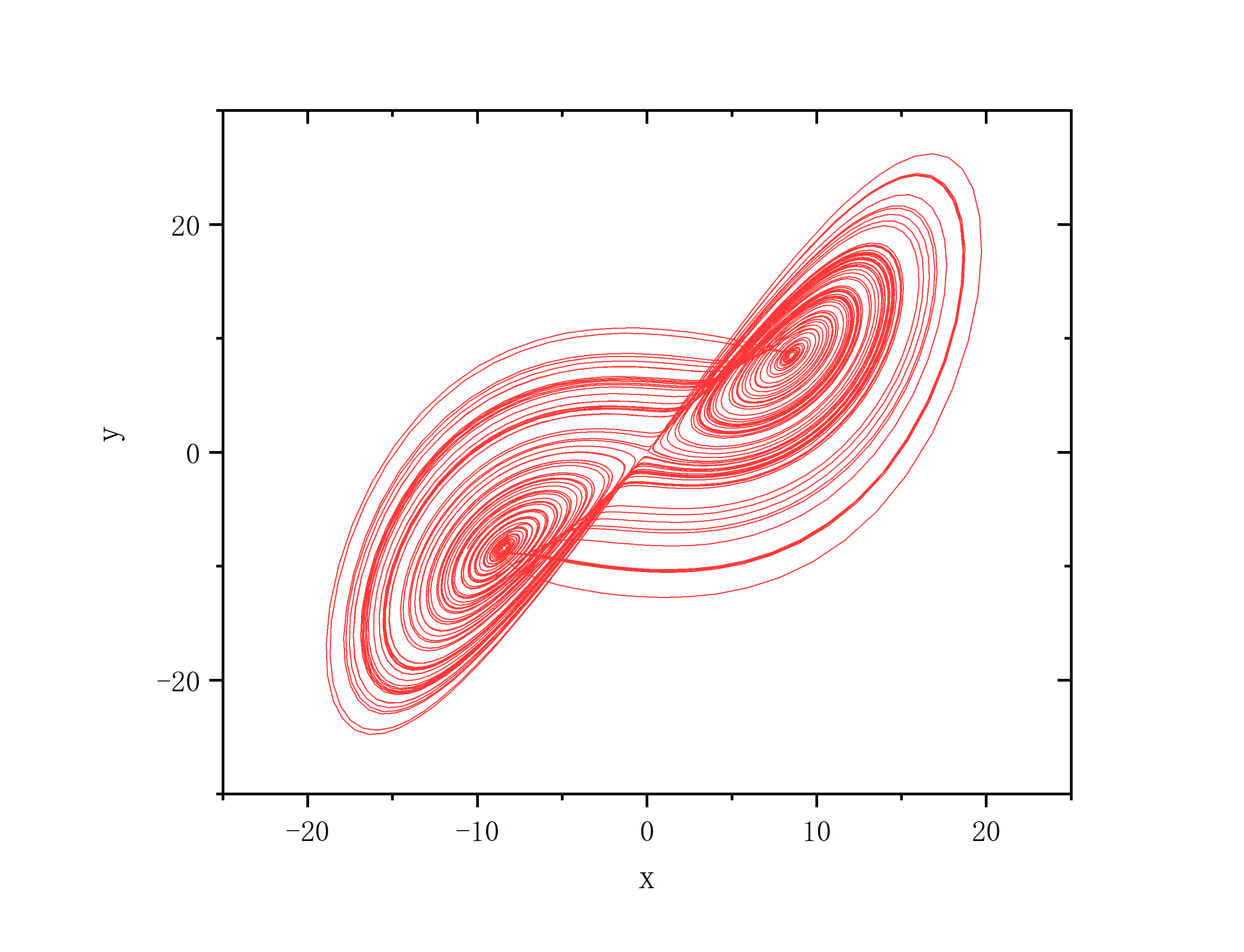
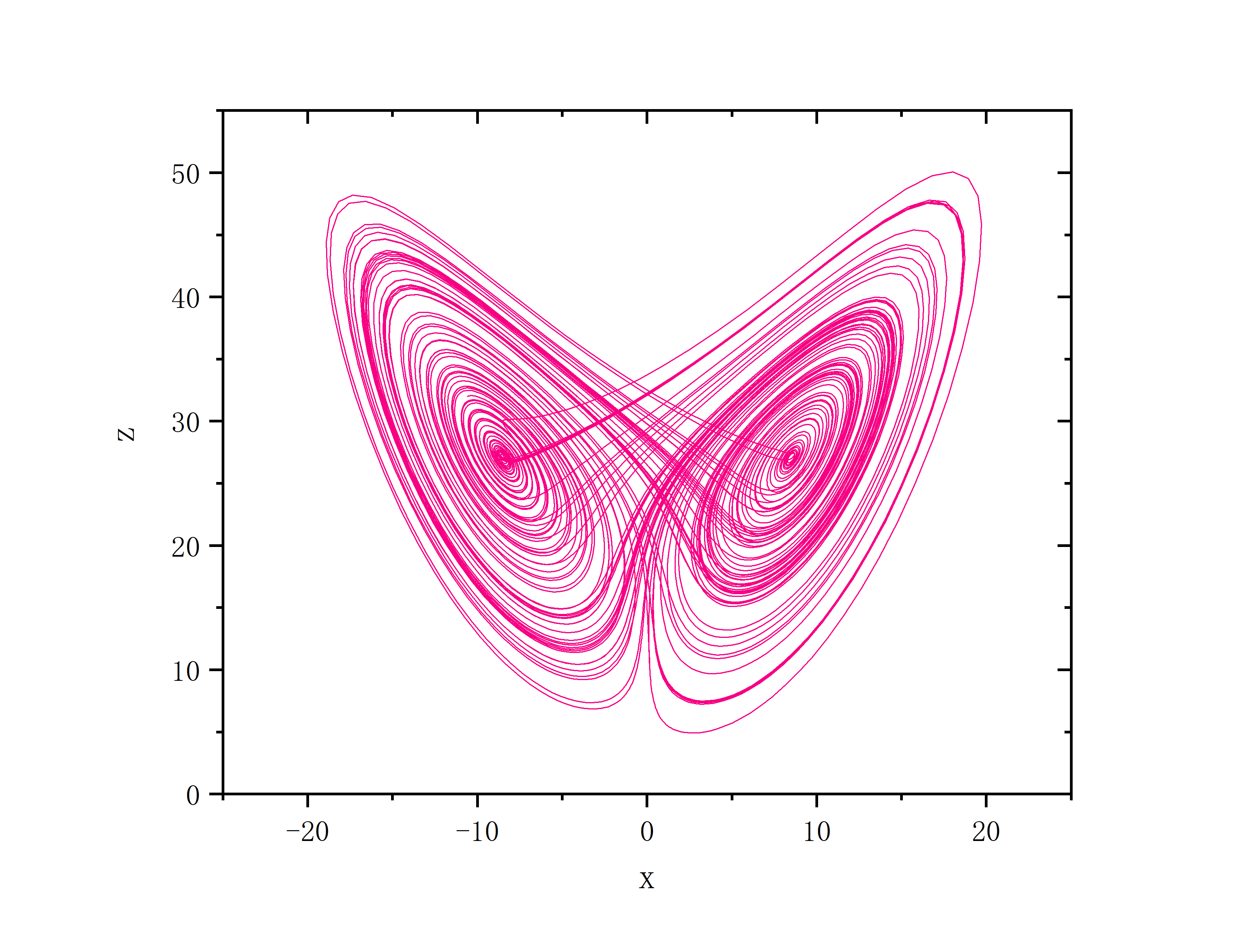
a=40,b=8.0/3.0,c=28.0


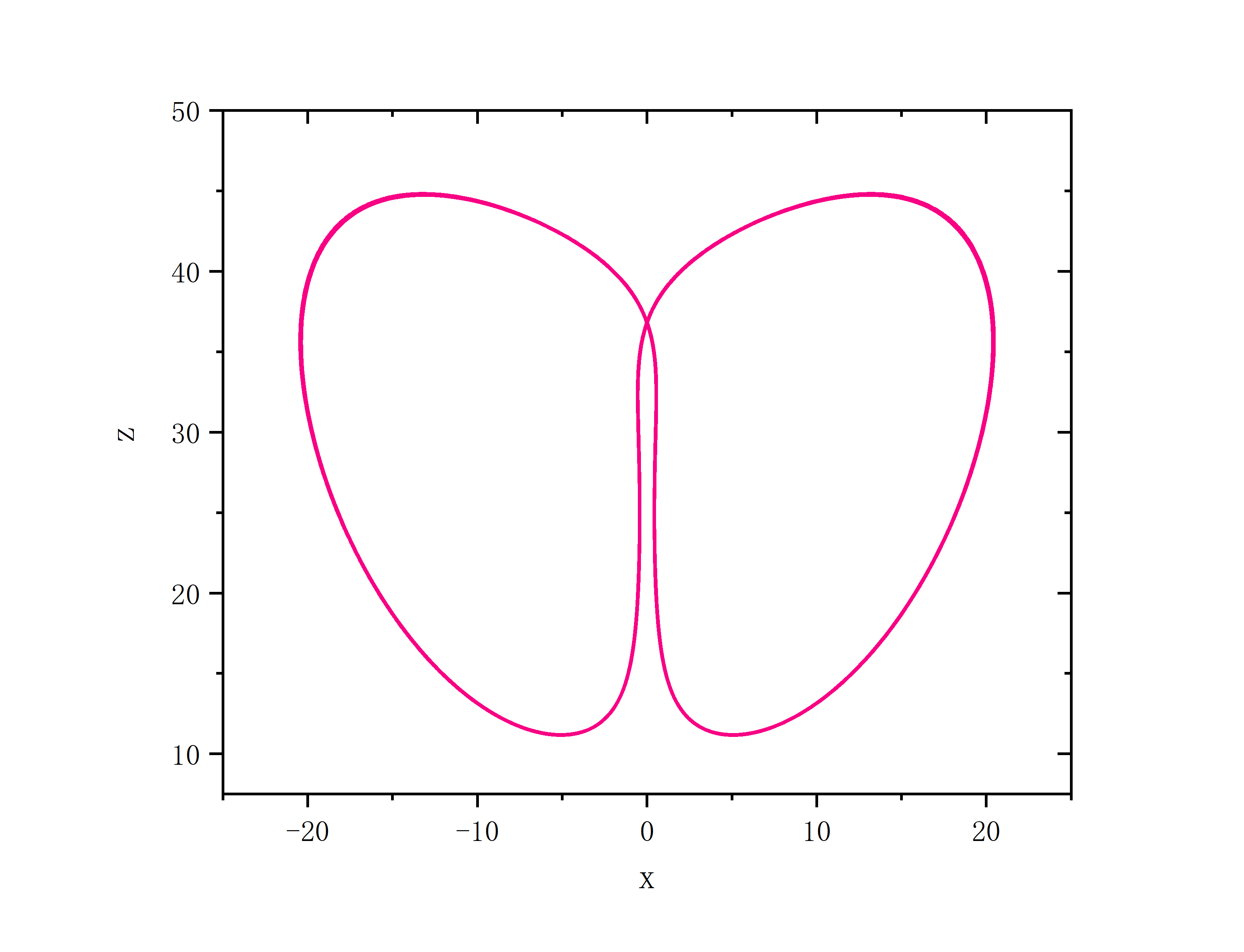
a=10,b=0.54,c=28.0
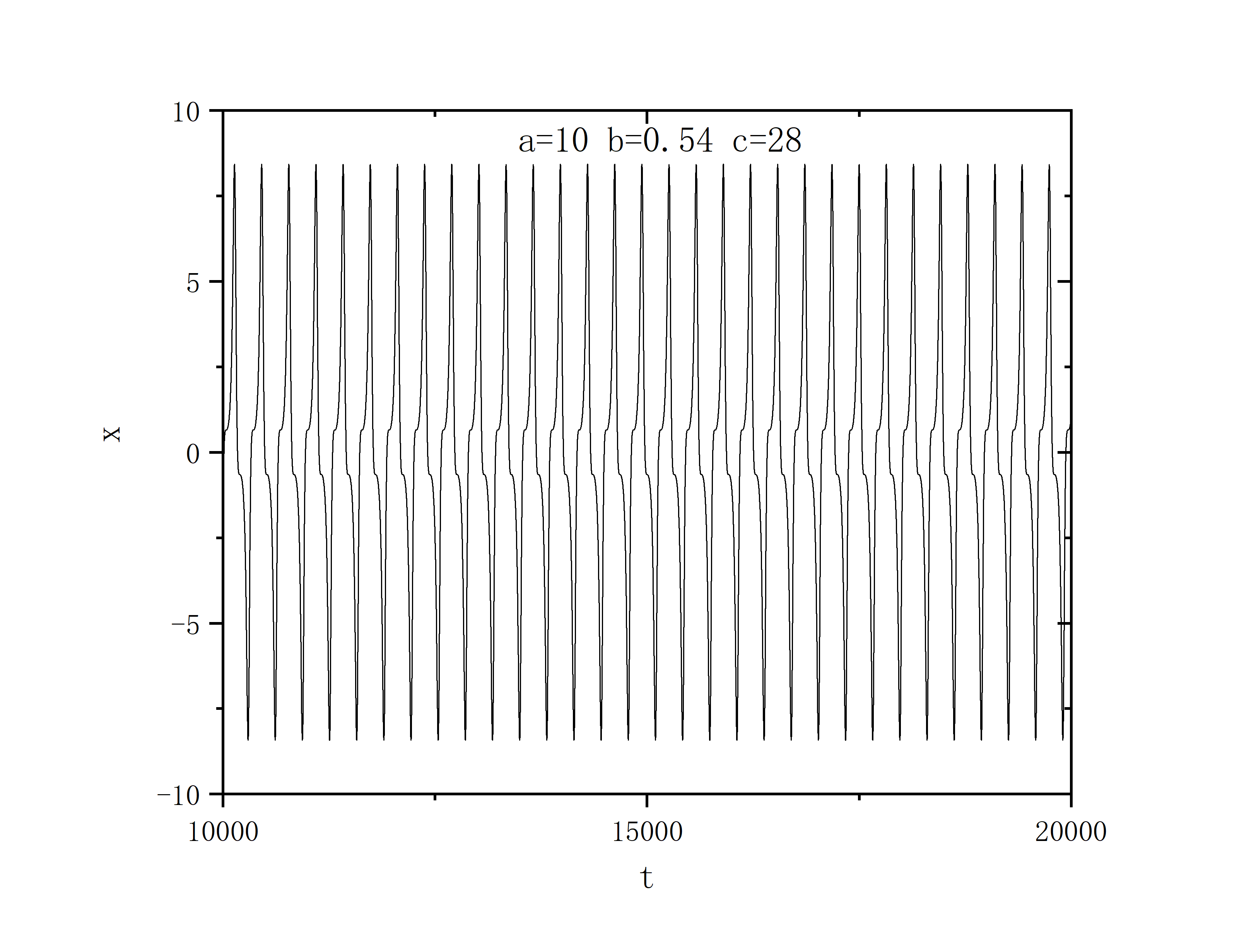
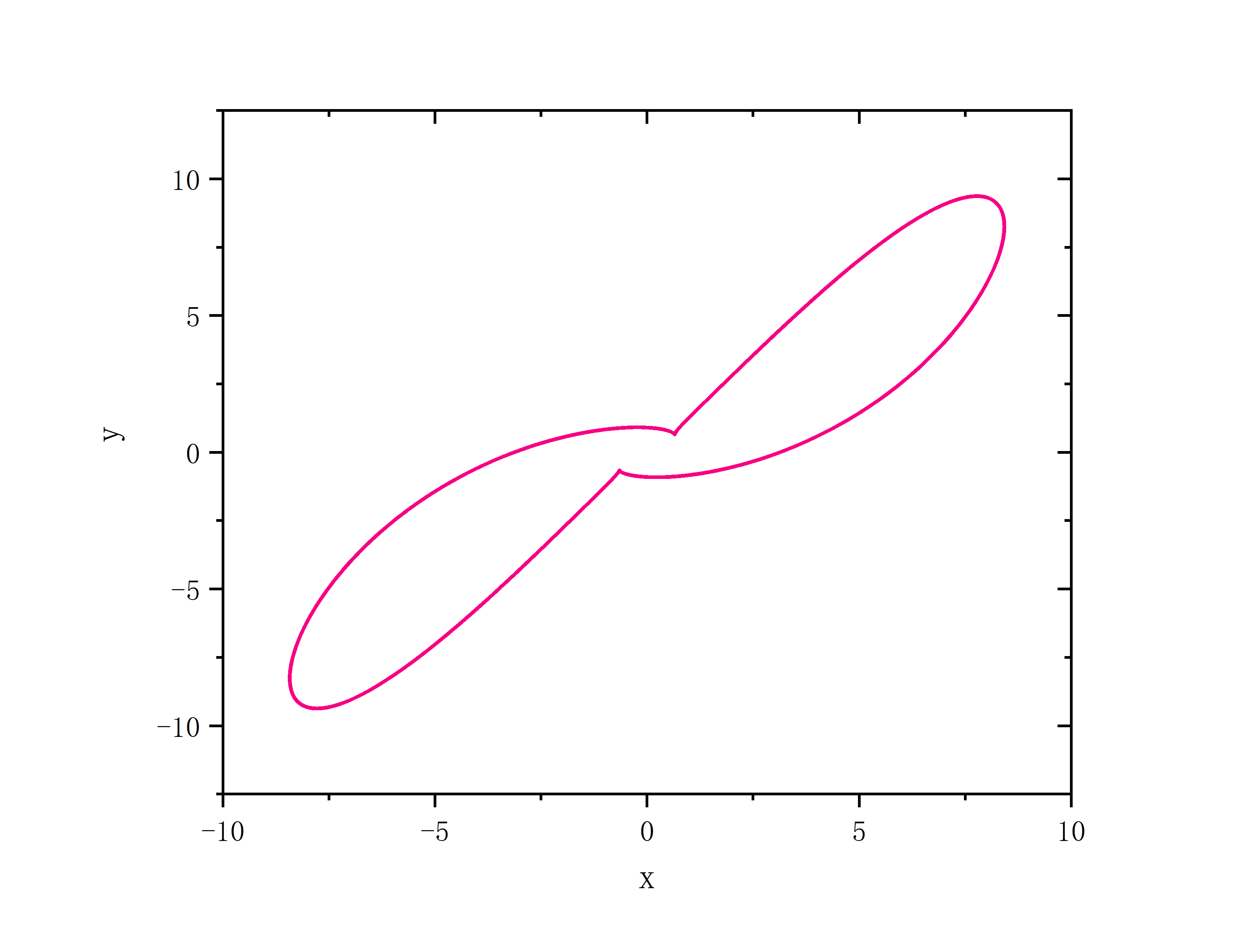
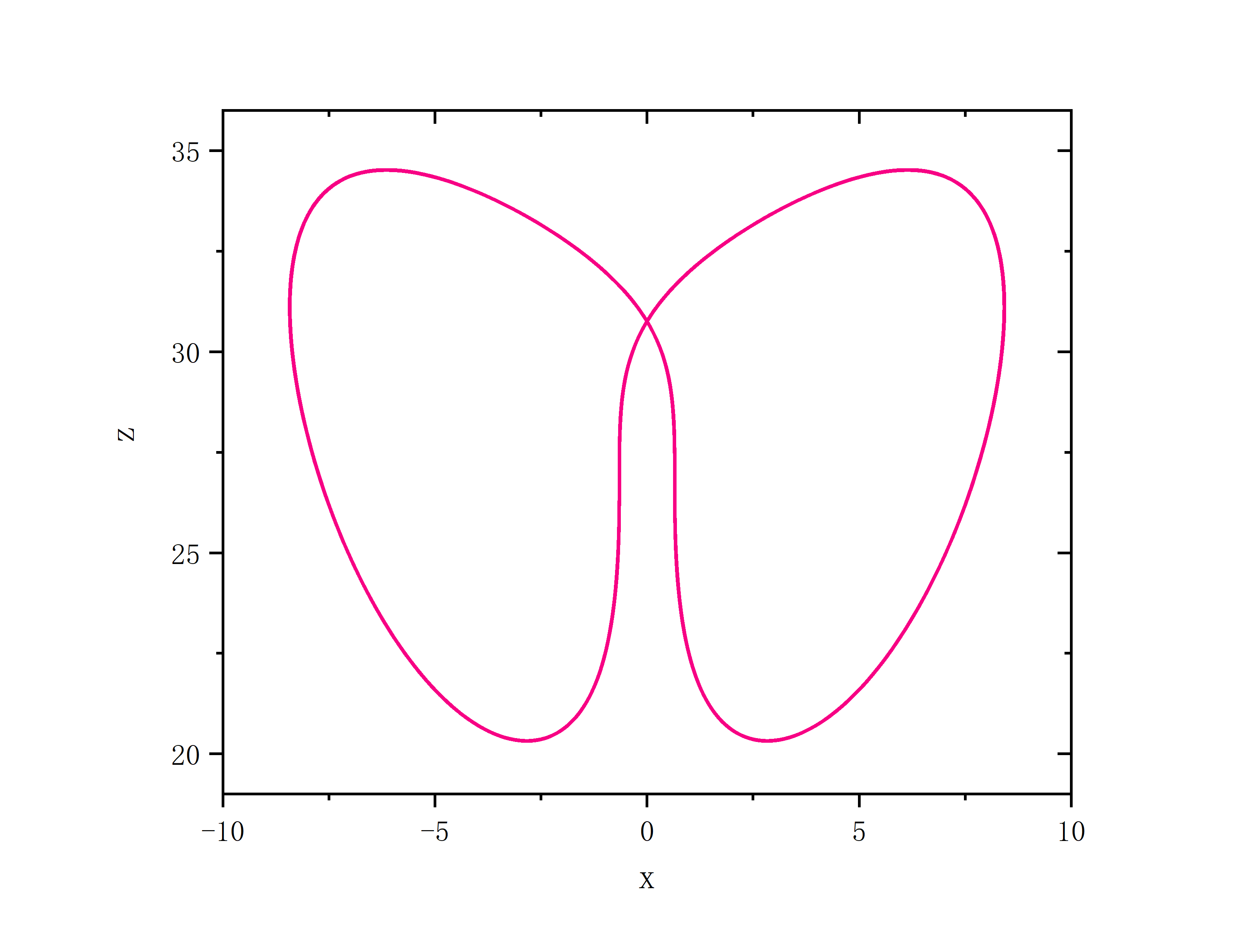
a=10,b=8.0/3.0,c=50


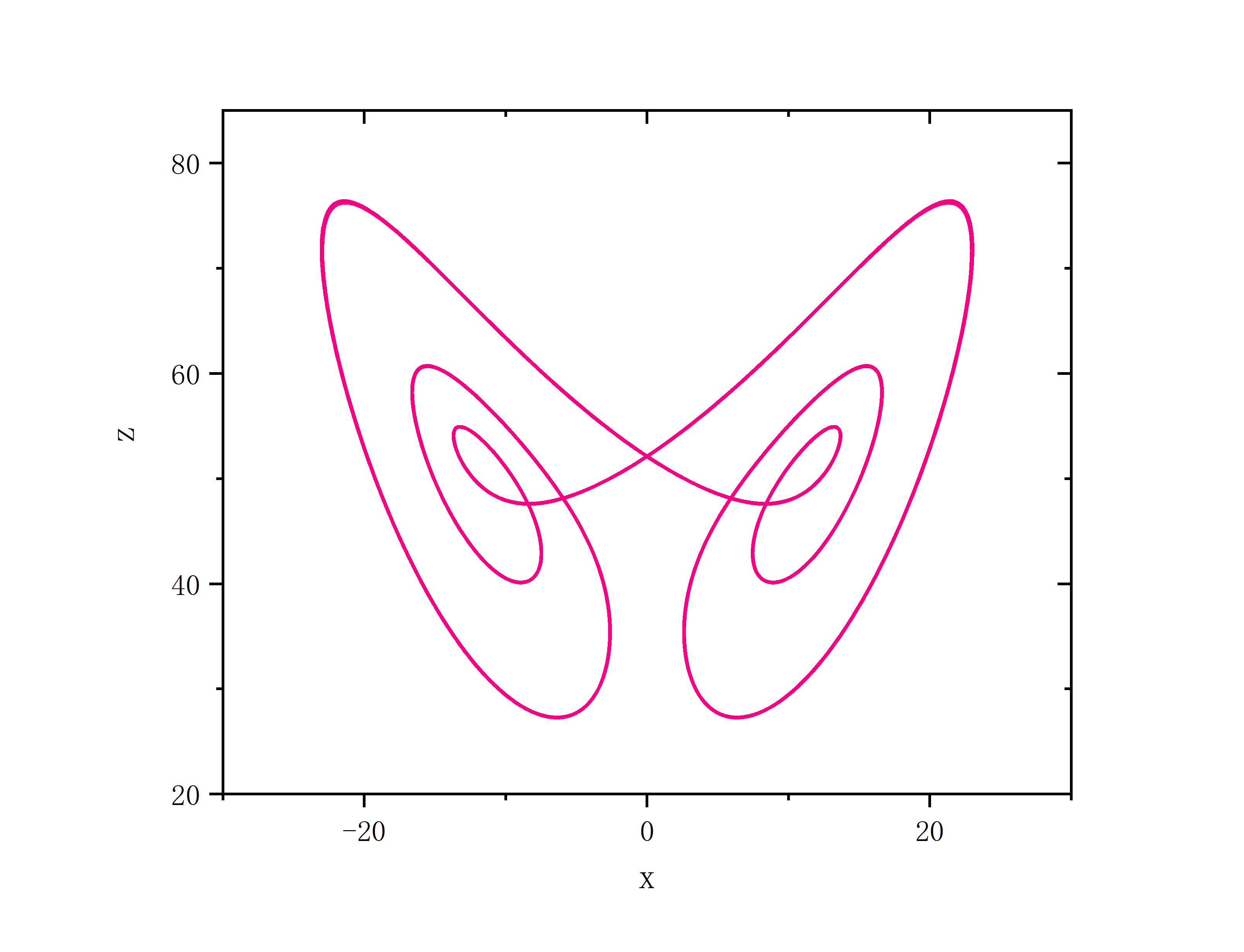
a=10,b=8.0/3.0,c=57.3
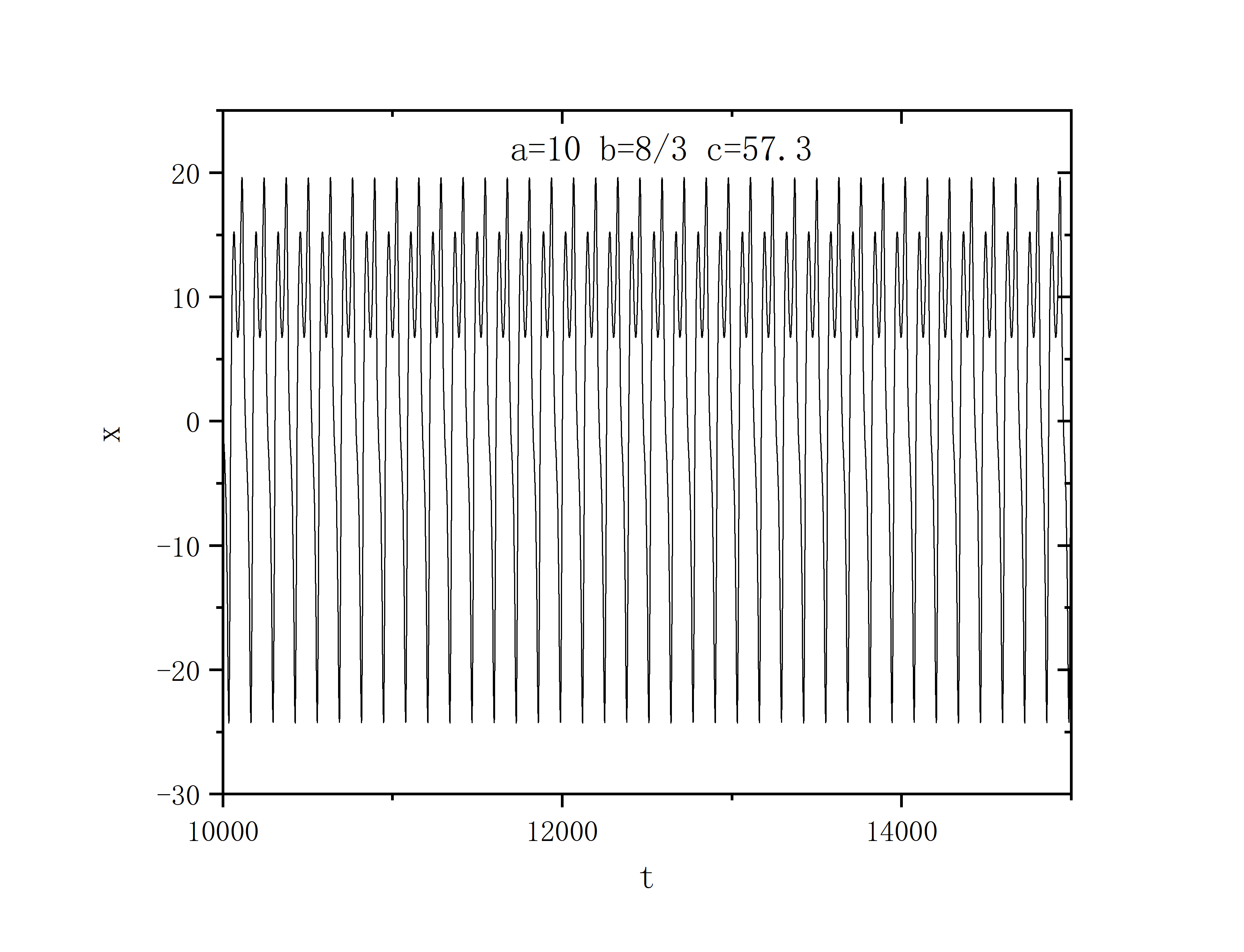
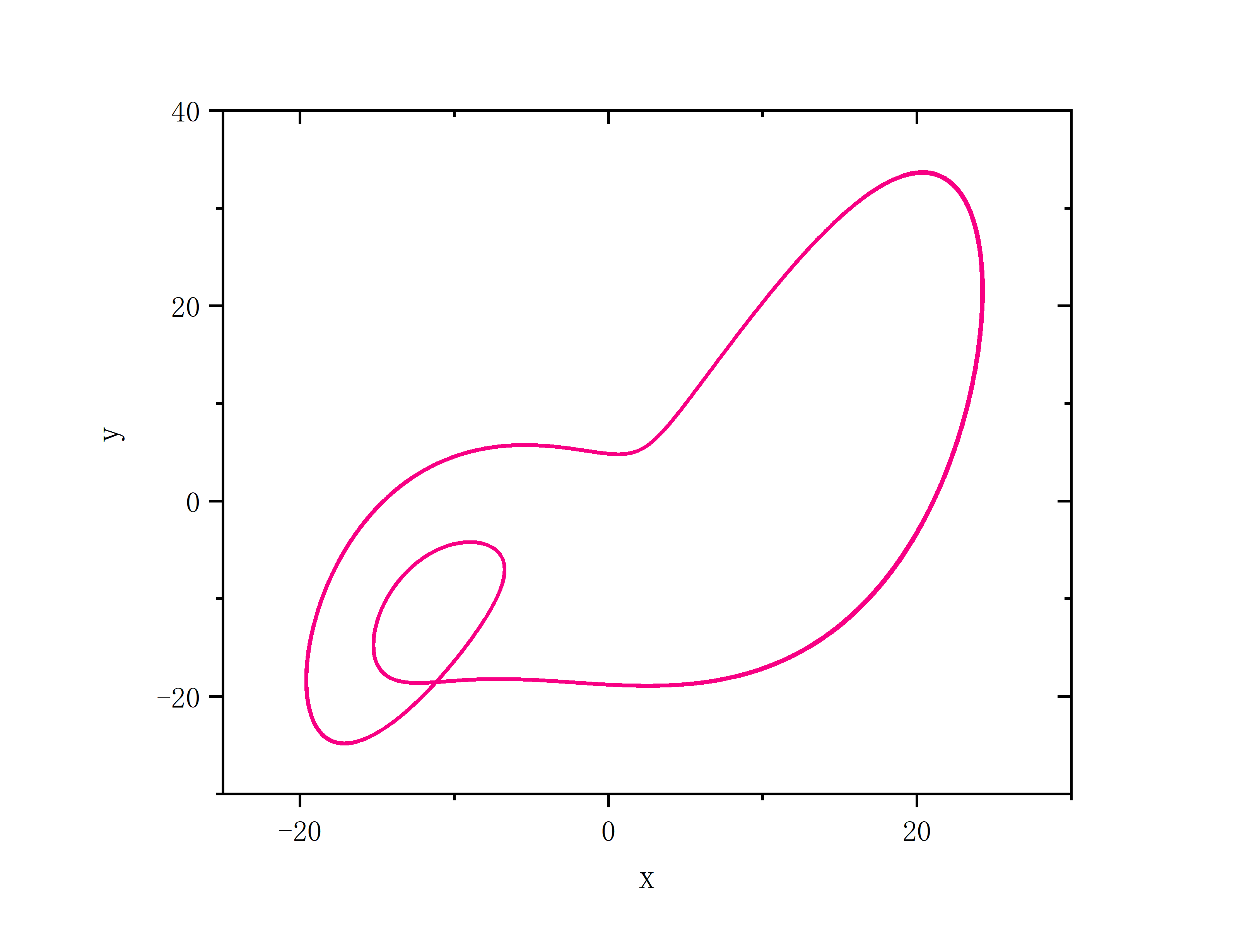

频率奇异态
module Rossler
implicit none
real,parameter :: h=0.01
integer,parameter :: N=100,MaxT=130000
integer,allocatable :: neighbour_matrix(:,:)
real :: x(N),y(N),z(N)
contains
subroutine x0_y0_z0()
implicit none
integer :: k
real :: x1,x2,x3
call random_seed()
do k=1,N,1
call random_number(x1)
call random_number(x2)
call random_number(x3)
x(k)=2.0*x1-1.0
y(k)=2.0*x2-1.0
z(k)=2.0*x3-1.0
!x(k)=x1
!y(k)=x2
!z(k)=x3
write(10,*) x(k),y(k),z(k)
end do
!x=0.001
!y=0.001
!z=0.001
end subroutine x0_y0_z0
subroutine fnf(p)
implicit none
integer :: i,j,p,t
real :: func_x(N),func_y(N),func_z(N),a,b,c,tau(N),epsilon,coupling(N),random,x_change(N,MaxT),&
&count_number_up(N),count_number_down(N),t_start(N),t_end(N),t_change(N),f_i(N),count(N)
a=40.0
b=8.0/3.0
c=28.0
tau=1.0
epsilon=0.6
count=0.0
t_change=0.0
x_change=0.0
! do i=1,N/2,1
!100 call random_number(random)
! if(abs(1.0-tau(ceiling(100.0*random)))<0.1) then
! tau(ceiling(100.0*random))=0.76
! else
! goto 100
! end if
! end do
do i=N/2+1,N,1
tau(i)=0.6
end do
write(90,*) tau
do t=1,MaxT,1
coupling=0.0
do i=1,N,1
do j=1,N,1
coupling(i)=coupling(i)+neighbour_matrix(i,j)*(x(j)-x(i))
end do
func_x(i)=x(i)+h*(a*(y(i)-x(i))+tau(i)*epsilon*coupling(i))
func_y(i)=y(i)+h*(c*x(i)-x(i)*z(i)-y(i))
func_z(i)=z(i)+h*(x(i)*y(i)-b*z(i))
if(i==25.and.t*h>1000) then
write(20,*) t*h,x(i)
end if
if(i==41.and.t*h>1000) then
write(41,*) t*h,x(i)
end if
if(i==60.and.t*h>1000) then
write(60,*) t*h,x(i)
end if
if(t*h==1000) then
write(50,*) i,x(i)
end if
if(t>129000) then
write(70,*) i,t,x(i)
end if
if(t*h>1000) then
x_change(i,t)=x(i)
if(x_change(i,t)>0.0) then
count_number_up(i)=count_number_up(i)+1
if(count_number_up(i)==1) then
t_start(i)=t*h
end if
else if(x_change(i,t)<0.0) then
count_number_down(i)=count_number_down(i)+1
end if
if(count_number_up(i)>30.and.count_number_down(i)>30.and.x_change(i,t)>0.0) then
t_end(i)=t*h
count(i)=count(i)+1
t_change(i)=t_change(i)+1.0/(t_end(i)-t_start(i))
count_number_up(i)=0
count_number_down(i)=0
end if
end if
end do
x=func_x
y=func_y
z=func_z
end do
do i=1,N,1
f_i(i)=(1.0/(count(i)+1))*t_change(i)
write(80,*) i,f_i(i)
end do
return
end subroutine fnf
!建立网状结构
subroutine neighbour(K)
implicit none
integer :: K !单节点K个邻居
integer :: i,j,number
allocate(neighbour_matrix(N,N))
!初始化网络矩阵
neighbour_matrix=0
do i=1,N-1,1
do j=i+1,N,1
if(abs(i-j)<=K/2.or.abs(i-j)>=N-K/2) then
neighbour_matrix(i,j)=1
neighbour_matrix(j,i)=1
end if
end do
end do
!输出矩阵
do i=1,N,1
do j=1,N,1
write(30,"(I2)",advance='no') neighbour_matrix(i,j)
end do
write(30,*)
end do
return
end subroutine neighbour
end module Rossler
program main
use Rossler
implicit none
integer :: p
p=1
open(10,file="data_x0_y0_z0.txt")
open(20,file="data_i_20.txt")
open(41,file="data_i_45.txt")
open(60,file="data_i_70.txt")
open(50,file="data_i_x.txt")
open(30,file="neighbour_matrix.txt")
open(70,file="i_t_x.txt")
open(80,file="i_fi.txt")
open(90,file="tau.txt")
call x0_y0_z0()
call neighbour(2*p)
call fnf(p)
deallocate(neighbour_matrix)
close(10)
close(20)
close(41)
close(60)
close(50)
close(30)
close(70)
close(80)
end program main


